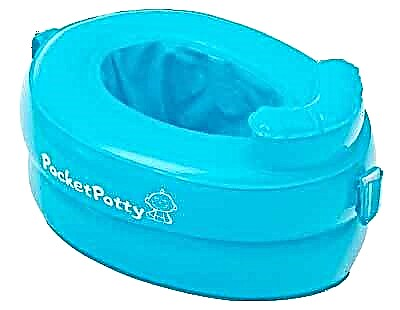
Light sandbox tables in recent years, they have become very popular as not only entertainment, but also an educational gadget that can help in the accelerated development of a child. Many dads "with hands" who sincerely love tinkering with various things are ready to consider the possibility of producing such a gadget on their own, and for them good news - it is possible! Let's see how this is done.

Features:
Experts see the light sandbox as a powerful tool for a child's all-round development. According to them, for a baby this is not just one of the options for creativity, but also an excellent training for fine motor skills of the hands, which inevitably causes accelerated brain development.

Indirectly, the effect of using a table for drawing with sand from early childhood is expressed in the fact that children begin to speak a little earlier, and they learn vocabulary and correct pronunciation faster.
A separate positive function of sand is that it has a strong calming effect - so much so that for many psychologists working with it forms the basis of a special type of therapy.

At the same time, the purchased gadget options do not always meet the best expectations. First of all, they may not like some little things, for example, they do not correspond to the amount or shape of free space that your home has. Claims are even more serious, if the materials are of poor quality and even dangerous for the child, the assembly is unsatisfactory, the durability is in doubt. Of course, you can almost always find a better analog, but in all cases, without exception, this will result in an increase in costs.

That is why many dads prefer to make such a game shell on their own with their own hands. This is especially true if a man also works with wood in everyday life and can use materials left after work or repairs in an apartment - in this case, making a table will cost mere pennies.

At the same time, it is possible to carefully control the quality of products, for example, deliberately abandon toxic chipboard in favor of a safe, durable and reliable array, which, when self-made, may not hit the wallet especially. After all, for a person who already has some prior experience with wood, such a task will not be too difficult and will not take much time.
The main thing is to correctly and thoughtfully draw and perform neat cuts, and then the resulting product will not differ from the store ones for the worse.

What is required?
There are not so many materials for the production of a light sandbox:
- boards - approximately 100 by 25 mm for the frame and 20 by 40 mm for the legs, the length of the lumber is at the discretion of the master;
- plexiglass - a piece with a size slightly larger than the planned field for creativity;
- sealant;
- furniture screeds;
- varnish or paint;
- diodes for lighting with wiring and plug.
The list of tools is also not very extensive:
- saw or jigsaw for cutting lumber;
- sandpaper or grinder;
- cutter;
- brushes for paints and varnishes;
- pencil or chalk for marking.
Step-by-step instruction
Do-it-yourself sand drawing tablet production should start with a full-size sketch all the details. The tabletop itself for creativity is made rectangular, with a proportion of approximately 3-4 to 5. Determine the exact size yourselfbased on your child's age and ability to reach the center from either edge.

If you are making a model with your own legs, determine their height according to the same principle: the baby should see his field for creativity and be able to reach any corner without unnecessary effort.
- For the production of the frame, it is best to use a durable and safe, completely natural material, and solid wood is best suited for this role. To create a body, we need 4 boards: 2 longer and 2 more shorter. Their width, which in the structure will become high, should imply sides with a height of 4–6 cm, a groove for plexiglass of a few millimeters and a certain margin of several centimeters under this chamfer. It is possible, however, to do without a groove-and-tenon mount - then in the lower part of the rectangular frame you will have to glue the glass retaining strips securely, but the grooves are still more reliable. Take the length of the longer boards with a small margin so that they can cover the ends of the short boards.

- The grooves in the boards are milled out with a cutter after the lumber has been cut. Choose their thickness in such a way that the plexiglass fits as tightly as possible - we don't need the cracks, because sand will be poured there.

- Bottom in our homemade table will be single-layer: only made of plexiglass. It can be chosen in any color, focusing on the overall beauty of the product. You need to cut a piece of plexiglass of such a size that it is slightly larger than the visible area (the "excess" will hide in the groove), but at the same time it allowed the frame boards to close around the transparent bottom. The excess around the perimeter must be made large enough so that, entering the groove, they are able to hold the weight of the glass and sand on it, without threatening to slip out.

- Now you need to deal with legs, which are made of planks of sufficient thickness to support the weight of the structure. The parameters of 20 by 40 mm, most likely, should be enough, and then it remains only to achieve their equal length.

- The next step is to assemble the structure. A sheet of plexiglass is covered with future sides on all sides and squeezed tightly, having previously coated all joints with a sealant, and then additionally secured with furniture ties. It is better to secure the legs from the inside of the frame - this will make the whole product more stable, and the legs will also serve as an additional support for the glass bottom. Make sure that not the slightest gaps are left, and if there are any, coat them with sealants.

- The next task involves carefully painting or varnishing the wooden parts of the structure. The complexity of this stage lies in the fact that you cannot touch the plexiglass itself - from this it will definitely not become better to let light through. However, skipping painting or varnishing is unacceptable, because they not only improve the appearance of the finished flatbed sandbox, but also protect the frame from various types of unwanted effects.

- Only then can you practice backlit... Even ordinary LEDs can be used for it, because they have a lot of advantages: low power consumption and no heating, due to which the plexiglass will remain cold. In addition, the extremely low weight of such lighting fixtures allows you to do without an additional second bottom, because you can attach small bulbs directly to the glass from the back. Lighting devices must be connected to a power cable with a plug, it is even possible with a separate switch on the cord.

- Check in progress insulation of all wiring, and, if everything is in order with the wires, you can pour sand and allow children to get to the play equipment.

You can see more detailed instructions on how to make a sandbox light table with your own hands in the next video.



